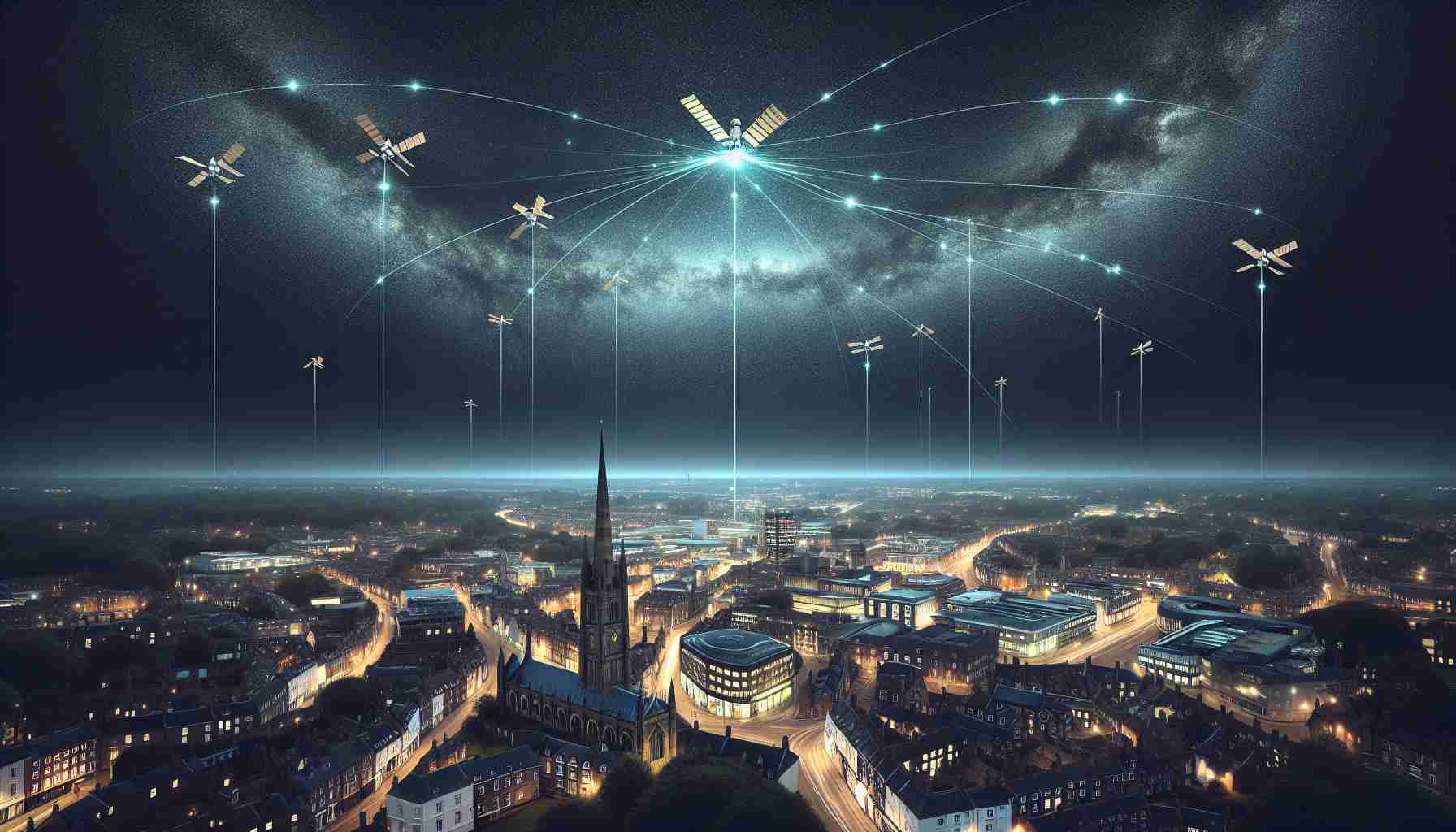
On Saturday, residents of Norwich witnessed a remarkable sight in the evening sky, as a series of satellites from SpaceX soared overhead. These satellites are arranged in a unique constellation designed specifically to improve internet services for users on the ground.
SpaceX, founded by tech entrepreneur Elon Musk, has made significant advancements in satellite technology, distinguishing itself as the sole operator capable of deploying satellites on a flexible schedule. This ability allows them to respond promptly to the increasing demand for improved global internet connectivity.
As of April 2024, the Starlink initiative boasts an impressive network of 5,874 satellites in orbit, with the majority being fully operational. This extensive constellation is set up to deliver high-speed internet access to areas that previously faced connectivity challenges, enhancing communication and expanding digital access.
The visibility of these satellites has captured the attention of many, sparking interest in the ongoing developments in satellite technology and its implications for the future of internet access. The presence of SpaceX’s satellites in the Norwich skies signifies a step towards a more interconnected world, where even the most remote locations can enjoy the benefits of modern technology.
Starlink Satellites Boost Connectivity in Norwich: Expanding Horizons for Digital Access
Residents of Norwich are experiencing a transformative moment in their connectivity landscape, thanks to SpaceX’s Starlink satellite constellation. This innovative project aims not only to offer enhanced internet services but also to bridge the digital divide that persists even in urban settings.
What is Starlink and how does it work?
Starlink is a satellite internet constellation developed by SpaceX, designed to provide high-speed internet access to underserved and rural areas globally. The satellites communicate with ground stations and user terminals on the Earth, utilizing low Earth orbit technology to minimize latency—resulting in faster internet speeds compared to traditional satellite internet providers.
Key Challenges and Controversies
Despite the benefits, the rollout of Starlink has not been without challenges. One significant concern is the effect of satellite congestion on space debris. As SpaceX continues to launch more satellites to expand its constellation, the risk of collisions increases, potentially leading to hazardous debris in orbit.
Another contention involves the potential impact on astronomical observations. Astronomers have raised alarms about the visibility of Starlink satellites in the night sky, which can interfere with telescope observations and astrophysical studies. This has sparked discussions about regulating satellite brightness and mitigation strategies to minimize their visual footprint.
Advantages and Disadvantages of Starlink
The advantages of Starlink for Norwich residents can be particularly impactful. With a capability of delivering high-speed internet up to 150 Mbps, the service enables seamless video conferencing, streaming, and online education, which are vital in today’s digital economy. It also allows businesses in Norwich to enhance their operations without the limitations imposed by traditional broadband infrastructure.
However, there are disadvantages as well. The cost of the service may be prohibitive for low-income families, and the initial investment for the satellite dish and hardware can be a barrier. Additionally, while Starlink offers rapid internet, the service may experience latency issues during peak usage times, which can affect activities that require real-time responsiveness.
What are the implications for the future?
The ongoing success of Starlink in improving connectivity in places like Norwich opens up possibilities for other regions grappling with inadequate internet infrastructures. Countries with rural areas can replicate this model, fostering global connectivity and digital inclusion.
Moreover, as other companies begin to develop similar satellite internet services, competition may drive prices down and improve service quality, ultimately benefitting consumers.
For residents curious about the current state or future developments of Starlink, they can explore more at Starlink.
In conclusion, the integration of Starlink satellites over Norwich marks a pivotal moment in efforts to enhance internet accessibility, but it also prompts broader discussions about sustainability and the implications of our expanding reach into space. The path forward will require careful navigation of these challenges to truly realize the potential of satellite internet.



